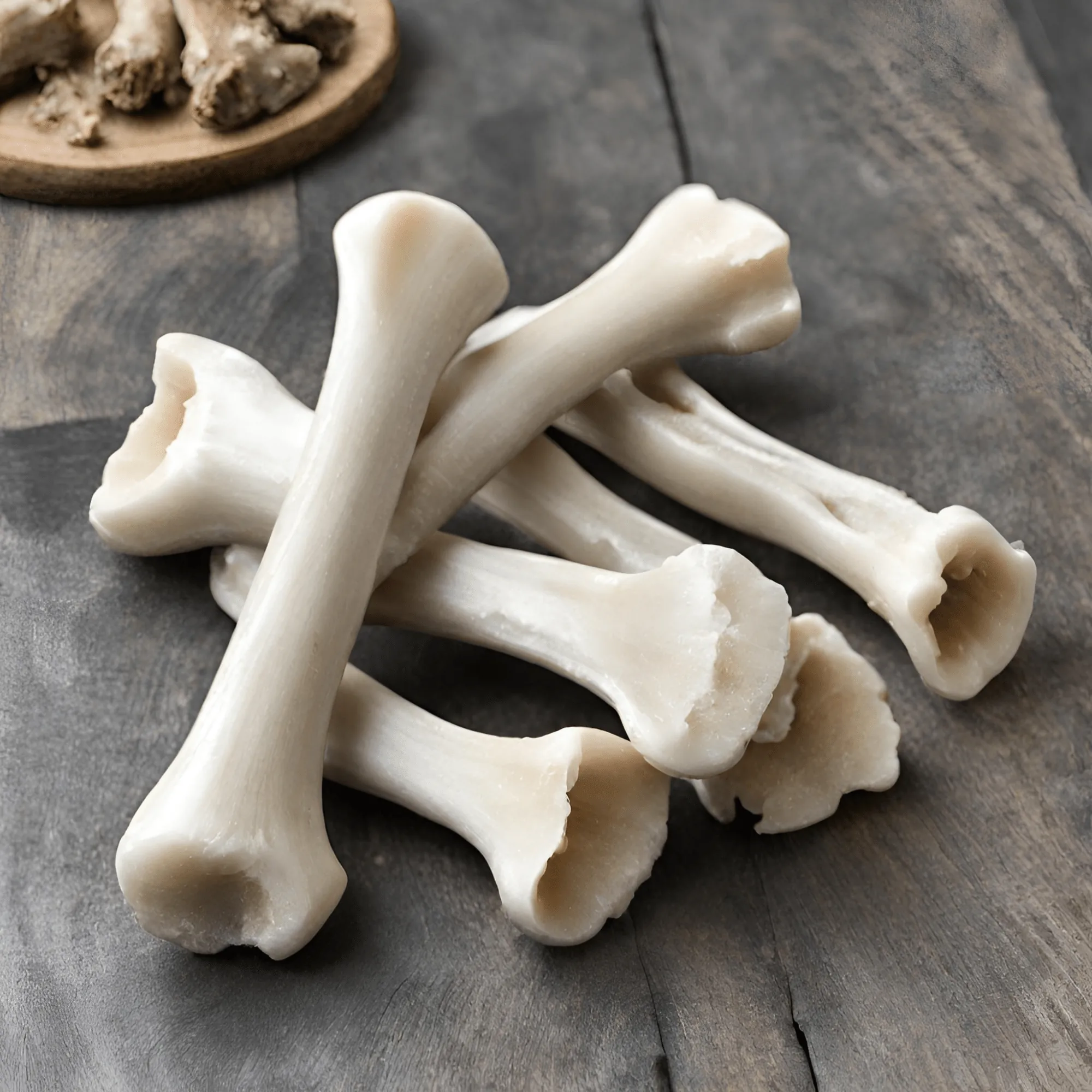As we delve into canine nutrition, many pet owners are curious about including deer bones in their dogs’ diets to enhance their overall well-being. A prevalent misconception among pet owners is that treats containing the word ‘bone’ pose a risk due to potential splintering and throat blockages. However, it’s crucial to understand that these treats’ safety depends on how they are processed. Join us as we explore a detailed guide to safely offering a natural and enjoyable treat for your ultimate canine companion!
In this article, we explore whether dogs can safely consume deer venison. From examining dental health benefits to considering potential hazards, we’ll delve into the various aspects of this controversial canine culinary choice. Furthermore, we’ll provide insights into how to prepare deer bones for dogs.
Here are the topics we’re going to discuss in this blog post:
- Can dogs eat deer bones?
- Are deer bones safe for dogs?
- How to prepare deer bones for dogs
- Benefits of deer bones for dogs
- Potential drawbacks of feeding deer bones to dogs
- Can dogs eat cooked deer bones?
- Deer leg bones for dogs
Can Dogs Eat Deer Bones?
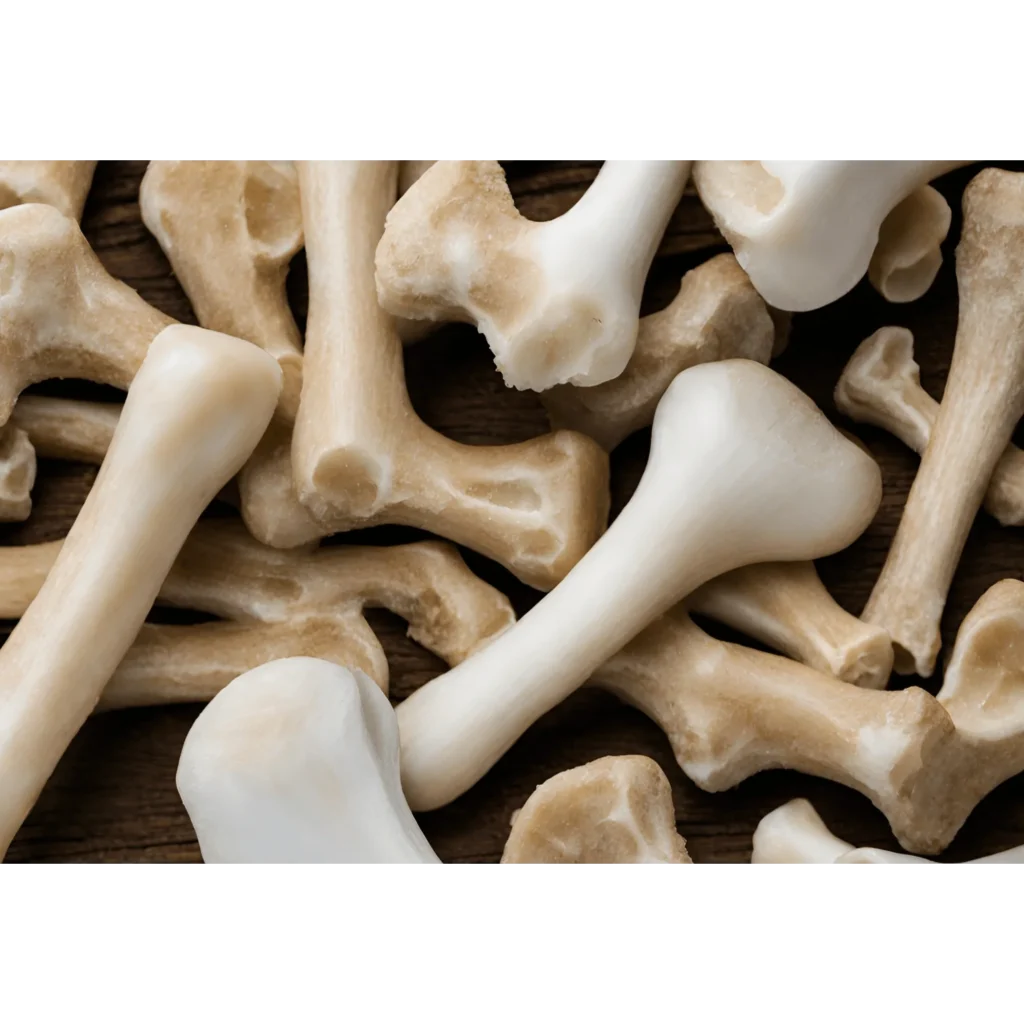
Yes, dogs can eat venison bones in moderation. Deer bones can be a valuable addition to your dog’s diet, providing increased nutrition and promoting enhanced oral health. Chewing on deer bones can be a source of enjoyment for your dogs, particularly as they try to access the deer bone marrow.
These bones also contribute to the removal of plaque and tartar buildup in dogs’ teeth, offering a durable chew that’s rich in calcium. However, it’s essential to emphasize that cooked deer bones are not suitable for dogs, as they can easily splinter and cause injuries to their mouth and intestines.
Are Deer Bones Safe for Dogs?
Dogs can safely consume a moderate amount of deer bones, much like deer meat. Chewing on bones serves as a stress-relief mechanism for dogs, helping to alleviate anxiety. This activity has a calming effect on the adrenal-pituitary axis in the brain, releasing endorphins—hormones associated with happiness.
When introducing deer bones, it’s advisable to do so gradually. Start with shorter chewing sessions and closely observe your dog’s reactions. Monitor their stools to ensure proper digestion. Opt for larger, meaty bones that match your dog’s size, avoiding small or brittle ones that may pose a choking hazard or splinter easily.
Keeping a watchful eye on your dog while they chew is crucial for a safe and enjoyable experience. Before incorporating deer bones or any new food into your dog’s diet, consulting with your veterinarian is essential. They can provide personalized advice, considering your dog’s health, age, and dietary requirements.
How Do You Serve Deer Bones to Dogs?
The optimal way to give your dog a deer bone is in its raw form, as cooked bones may pose potential dangers. To ensure your canine companion’s safety, supervise them during bone consumption to prevent choking on large or broken-off pieces.
If you prefer alternatives, consider obtaining marrow bones or air-dried bones from pet stores, which will provide a safe and enjoyable chewing experience. Another option is to boil a deer bone to create broth, which can be added to your dog’s food for extra nutrients without the associated risks.
Rinse the bones thoroughly under cold, running water to eliminate any dirt or debris. Utilize a brush to clean hard-to-reach areas and guarantee that the bones are entirely free from contaminants. Trim away any excess meat or connective tissue on the bones. While a certain amount of meat adds to the enjoyment, too much can spoil quickly and may attract bacteria.
Given the high calcium content in deer bones, it’s crucial to avoid overfeeding. If your dog’s diet already includes sufficient minerals, offer bones sparingly or as an occasional treat.
After your dog has finished with the bone, promptly dispose of any remaining fragments. This not only prevents potential injuries in your absence but also maintains a hygienic environment for your furry friend.
Keep an eye out for any signs of allergic reactions or sensitivities when introducing new treats, including bones. Watch for changes in behavior, skin issues, or digestive problems.
Benefits of Deer Bones for Dogs:
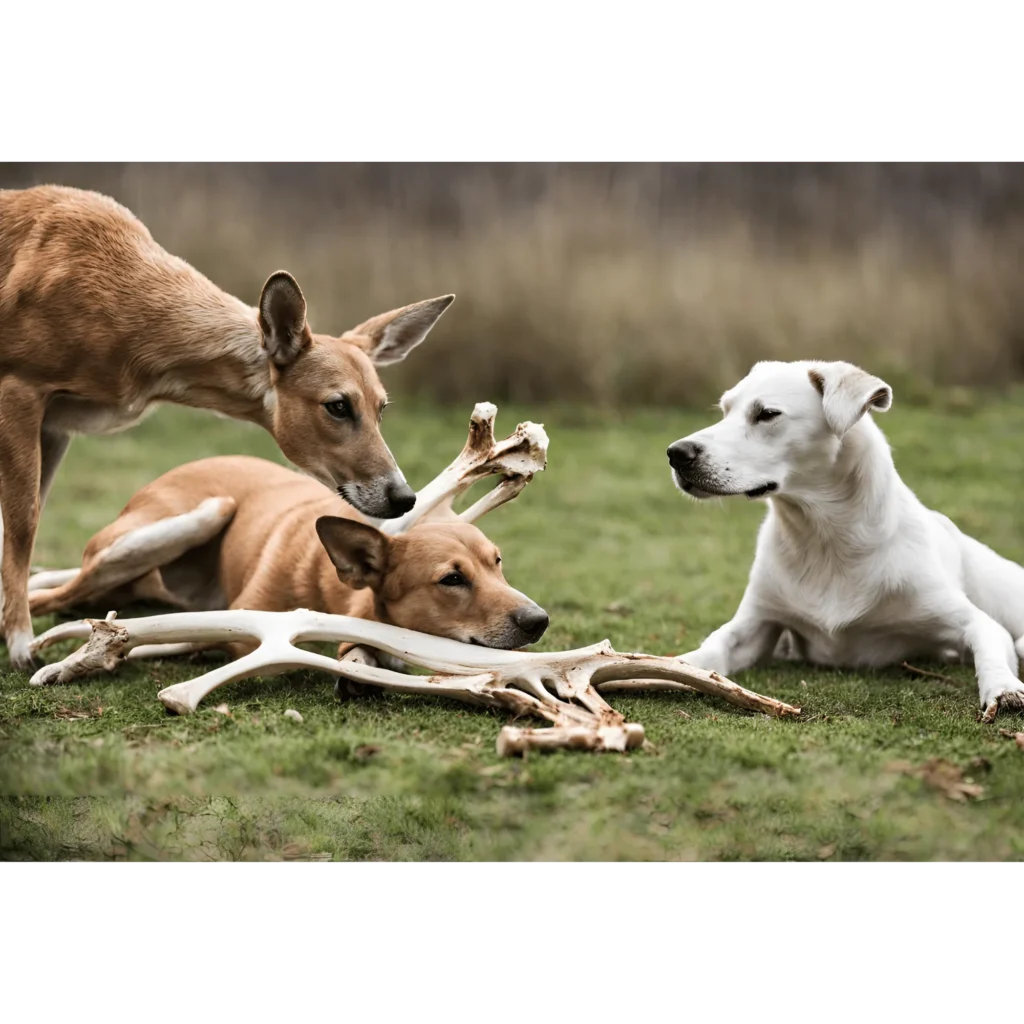
Feeding deer bones to dogs can offer several potential perils when done safely and responsibly. Here are some advantages associated with providing deer bones to dogs:
1. Dental Health:
The act of chewing on deer bones helps mechanically clean a dog’s teeth. The abrasive action of chewing helps remove plaque and tartar, preventing the buildup of bacteria on the tooth surfaces.
Regular chewing on bones can aid in preventing the formation of tartar, which, if left unaddressed, can lead to more severe dental issues such as gingivitis and periodontal disease.
2. Long Lasting:
Deer bones are often dense and sturdy, requiring dogs to spend more time chewing and gnawing. This prolonged chewing activity offers an engaging and entertaining experience, keeping dogs occupied for an extended period.
The need to work at the bone over an extended period provides mental stimulation for dogs. Engaging in a challenging and enjoyable activity helps prevent boredom and may reduce anxiety or destructive behaviors.
3. Nutrient Content:
Deer bones are considered rich in nutrients, including calcium, phosphorus, and trace minerals. Calcium is vital for bone and tooth health, and it is crucial for the proper development and maintenance of a dog’s skeletal system. It also plays a crucial role in various physiological functions, including muscle function, nerve transmission, and blood clotting.
Phosphorus is essential for bone formation, energy metabolism, and various physiological processes. Deer bones may contain trace minerals such as magnesium, copper, and selenium, which play roles in enzyme function, immune support, and overall metabolic processes.
4. Low in Fat:
For dogs that need to manage their weight or are on a weight-loss program, offering low-fat treats like deer bones can be beneficial. It provides a satisfying chewing experience without adding excessive calories. Lower fat content is often easier on a dog’s digestive system. It can be a suitable option for dogs with sensitive stomachs or those prone to digestive issues.
Dogs with certain health conditions, such as pancreatitis, may require a lower-fat diet to manage their condition. Deer bones, being relatively low in fat, can be a part of such a diet.
5. Hypoallergic:
Deer bones are a single-ingredient, natural treat. For dogs with food sensitivities or allergies, treats with fewer ingredients, like deer bones, may be less likely to cause adverse reactions.
Deer, as a single protein source, is a fantastic alternative to more commonly available proteins on the market. If your dog has common protein allergies or sensitivities, especially to chicken or beef, consider trying deer. It is less likely to have been overexposed in your dog’s diet, making it hypoallergenic and reducing the likelihood of causing an allergic reaction.
Potential Drawbacks of Feeding Deer Bones to Dogs:
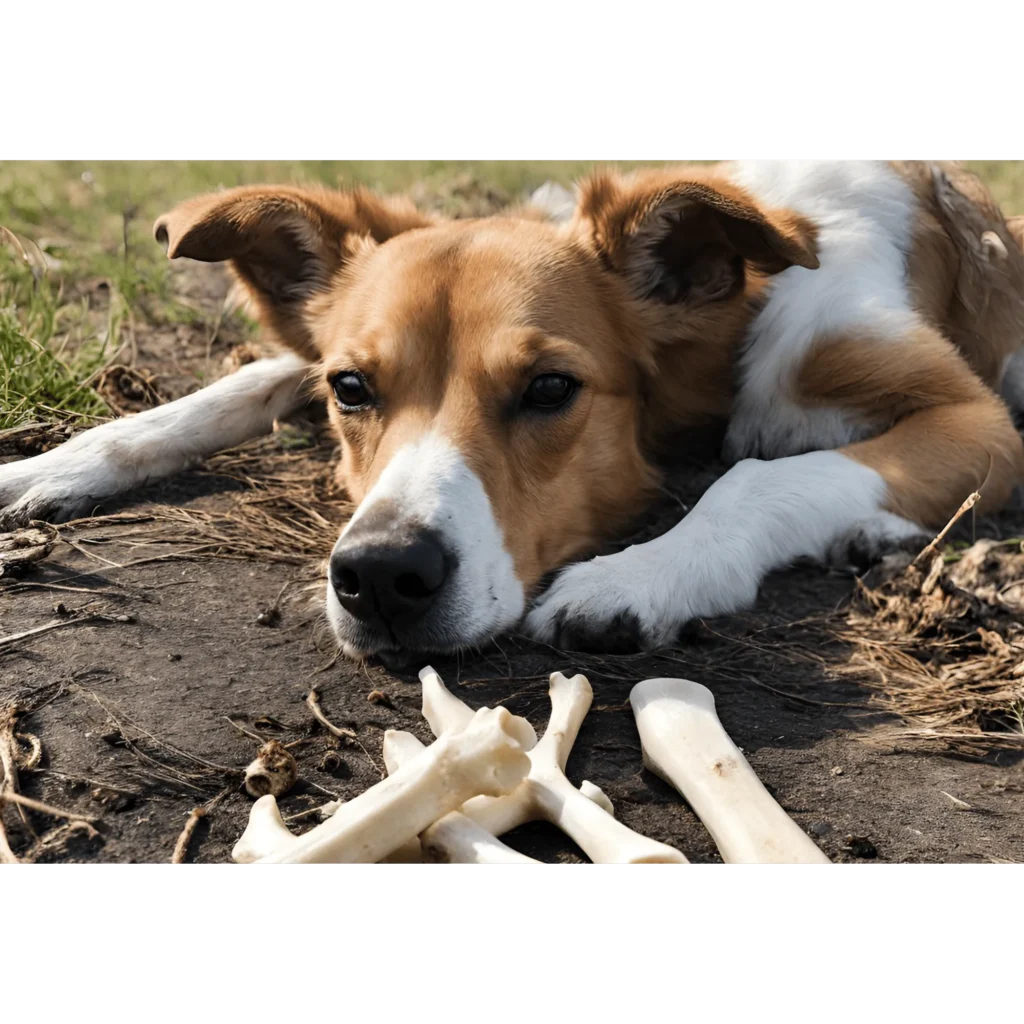
While deer bones can offer certain benefits, it’s essential to be aware of the potential drawbacks associated with feeding them to dogs. These perils include:
1. Choking Hazard:
If the deer bones are too small or inadequately sized for your dog, there is an increased risk of choking. Dogs may attempt to swallow bones whole, leading to obstruction or choking.
Bones, especially when cooked or brittle, can splinter into sharp fragments. If a dog bites off large or sharp pieces, they may become lodged in the throat, leading to choking.
2. Tooth Fractures:
Deer bones, particularly weight-bearing bones, can be dense and hard. Aggressive chewing on hard bones may lead to tooth fractures, especially if the dog has pre-existing dental issues or weakened teeth.
Dogs with pre-existing dental conditions, such as weakened enamel, cracked teeth, or periodontal disease, may be more susceptible to tooth fractures when chewing on hard bones.
3. Digestive Issues:
Dogs may chew and ingest bones, and in some cases, bone fragments may be too large or sharp, posing a risk of digestive obstruction. This can lead to symptoms such as vomiting, abdominal pain, and changes in bowel movements.
Some dogs may experience constipation after consuming bones. This can occur if the bone material is too dense or if the dog consumes large quantities, leading to difficulty passing stool.
4. Bacterial Contamination:
Raw bones, when not handled and stored properly, can carry bacteria on their surface. Dogs may come into contact with these bacteria during chewing or ingestion.
Dogs can carry bacteria such as Salmonella or E. coli in their mouths after consuming raw bones. This poses a risk of transmission to humans through contact with the dog’s saliva or faeces.
Can Dogs Eat Cooked Deer Bones?
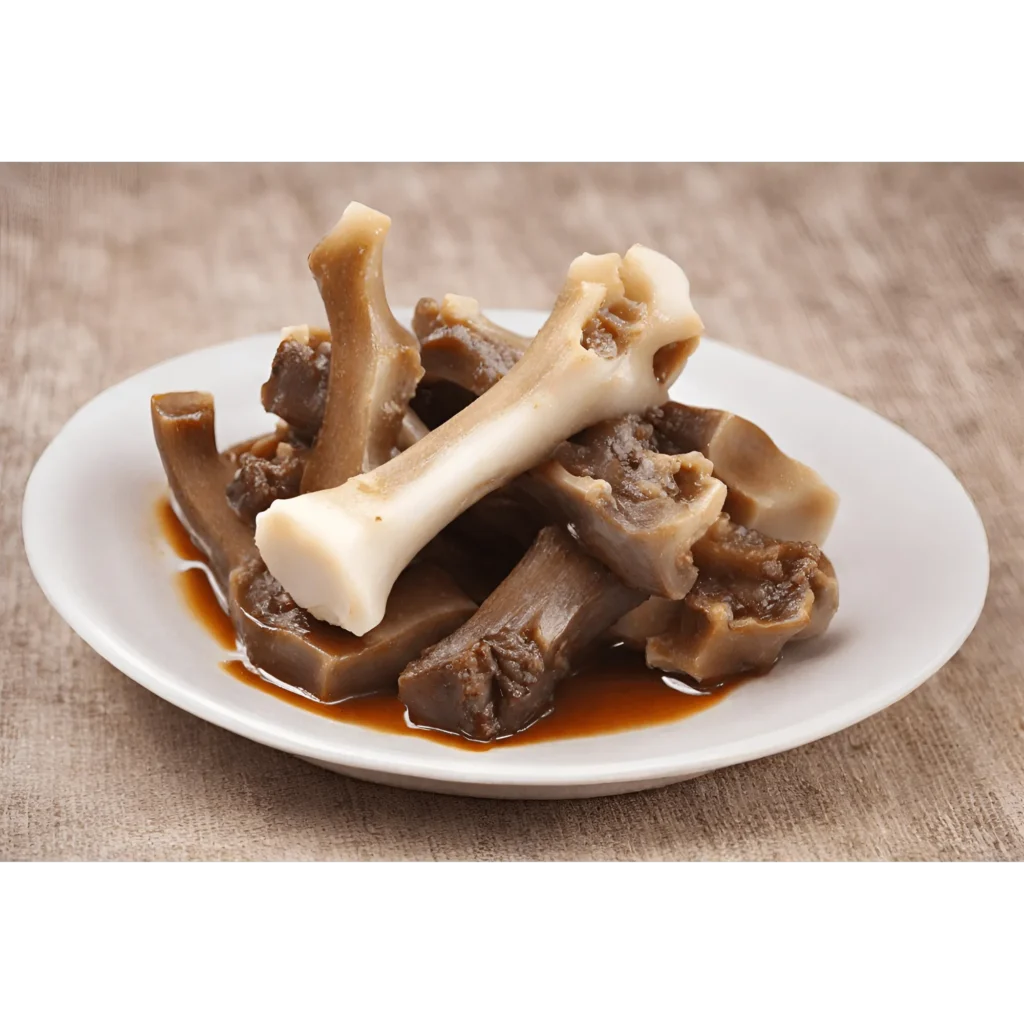
Feeding dogs cooked bones, including cooked deer bones, comes with significant risks and is generally not recommended. Cooking bones alters their structure, making them more brittle and prone to splintering. The process of cooking can remove moisture from the bones, making them harder and more likely to break into sharp fragments.
Cooked bones are more likely to splinter into sharp pieces, posing a choking hazard or the risk of internal injuries if ingested. Dogs may break their teeth when chewing on cooked bones, especially if the bones are exceptionally hard and dense. Cooked bones can be difficult for dogs to digest.
Consuming large pieces or sharp fragments may lead to gastrointestinal issues, including blockages or perforations. To ensure the safety of your dog, it’s generally recommended to offer raw, fresh bones instead of cooked ones.
Can Dogs Eat Deer Leg Bones?
Yes, your furry friend can enjoy our Deer Leg Bone Dog Chews without any worries because they are not cooked. This makes them safe for your dog to chew on gradually. We take extra care in a gentle air-drying process to maintain the bone’s texture, preventing it from becoming hard like glass. This process also helps retain all the essential nutrients and adds benefits.
Your dog can happily indulge in the tendons and marrow inside, but it’s important to note that it’s not recommended for them to consume the whole bone. It’s best to limit chewing sessions to a maximum of 30 minutes to ensure a safe and enjoyable experience for your pup.
Are Hairy Deer Legs Safe for Dogs?
Hairy deer legs are not recommended as a regular or preferred treat for dogs due to the potential risks associated with hair ingestion. Dogs lack the digestive enzymes needed to efficiently break down hair, and consuming large quantities can lead to digestive issues. Hair may form clumps or tangles, posing a risk of obstruction in the digestive tract.
Beyond the risk of digestive problems, excessive hair ingestion can potentially lead to choking hazards. Loose or dangling hair may become entangled in the dog’s throat or create a blockage, resulting in respiratory distress. If given, choose cleaner, meatier portions, remove loose hair, and monitor closely. Consult with a vet before introducing unconventional treats to ensure your dog’s safety and well-being.
Final Thought:
In conclusion, incorporating deer bones into your dog’s diet can offer various benefits, provided it is done safely and responsibly. The key lies in understanding the potential risks and taking appropriate precautions to ensure your canine companion enjoys a safe and enjoyable chewing experience.
While venison bones can contribute to enhanced dental health, prolonged engagement, and a nutrient-rich diet, it’s crucial to be mindful of potential hazards such as choking and tooth fractures, digestive issues, and bacterial contamination. Choosing the right size and type of bones, supervising your dog during chewing sessions, and consulting with your veterinarian before introducing any new treats are essential steps in promoting your dog’s overall well-being.
Opting for raw, fresh deer bones and avoiding cooked ones is paramount to reducing the risk of splintering and potential injuries. Additionally, alternative options, such as marrow bones or air-dried bones from reputable pet stores, can provide a safe and enjoyable chewing experience for your furry friend.
In the end, by understanding the benefits and risks associated with feeding deer bones to dogs, you can make informed decisions to enhance your ultimate canine companion’s health and happiness. As always, prioritize your dog’s safety and consult with your veterinarian for personalized advice tailored to your dog’s specific needs and health conditions.
FAQs:
1: Can you give your dog deer bones?
Yes, you can serve your dog’s raw deer bones. Raw bones are less likely to splinter, and they can be a natural source of nutrients for dogs. Cooked deer bones can splinter, pose a choking hazard, or cause internal injuries.
2: Are there specific bones designed for dogs?
Yes, there are bones specifically designed for dogs, such as raw meaty bones, available at pet stores. These bones are often larger, softer, and less likely to splinter than cooked bones.
3: Do deer bones splinter?
Yes, deer bones, like many other types of bones, have the potential to splinter. The risk of splintering is higher in cooked bones, which can become brittle and break into sharp fragments.
4: Is deer bone marrow good for dogs?
Yes, dogs enjoy consuming bone marrow, and it can provide nutritional benefits. Deer bone marrow is a rich source of healthy fats, vitamins, and minerals, including phosphorus and calcium, which are essential for bone health.
5: Can dogs have venison bones?
Raw venison bones are generally safer than cooked ones. Cooking can make bones brittle and prone to splintering, posing a risk to dogs. Always supervise your dog while they are chewing on venison bones, and ensure the bones are appropriately sized to prevent choking or splintering.

